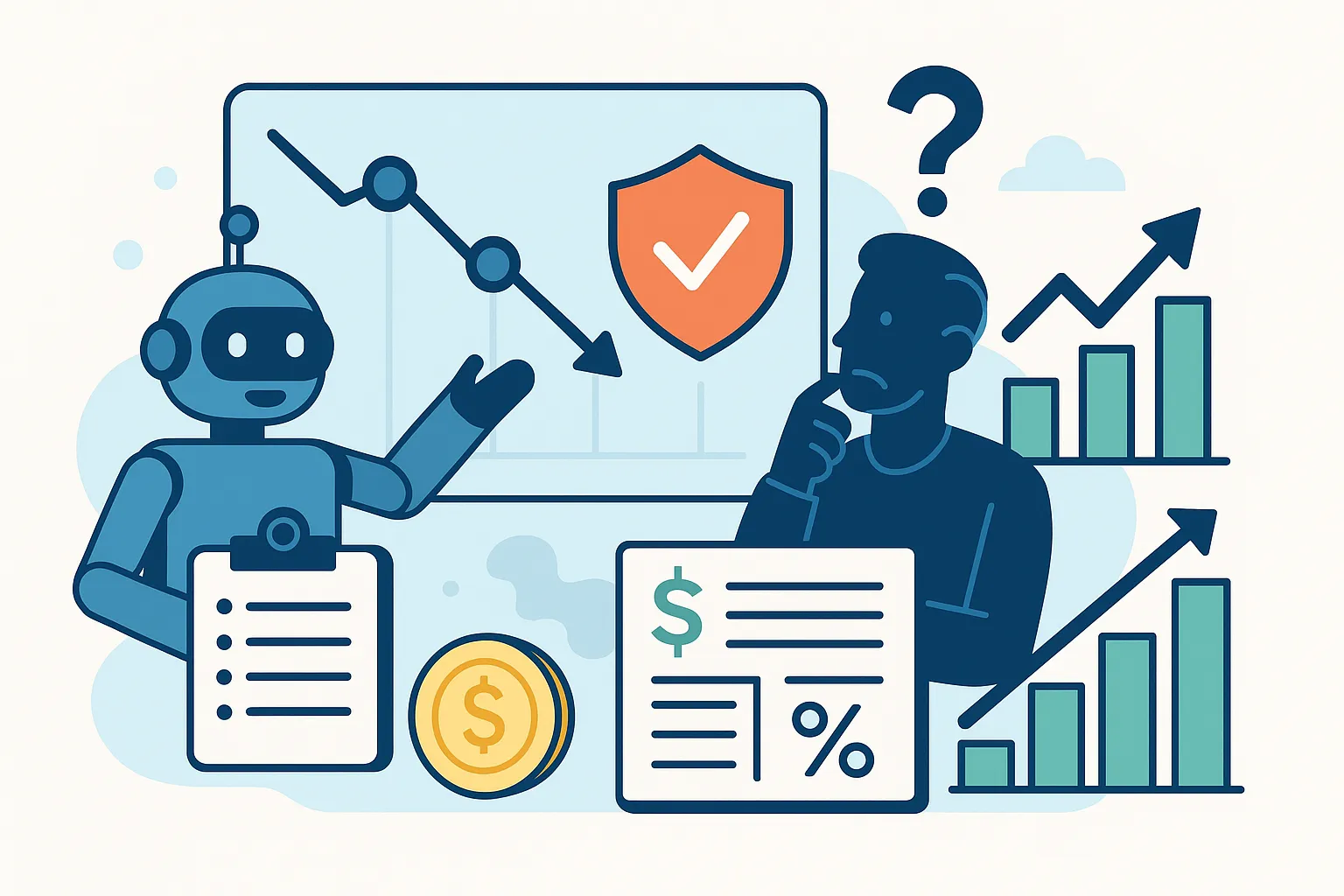AI Financial Advisor Guardrails That Prevent Costly Errors

In DALBAR’s 2024 QAIB press release, the Average Equity Fund Investor lagged the S&P 500 by 5.5 pp in 2023. Many assume losses come from the market itself. In reality, the bigger risk is often self-inflicted: panic selling, chasing performance, or overlooking tax impacts.
This article explains how AI financial advisors add guardrails that help investors avoid these costly behavioral and structural errors - offering not a replacement for judgment, but a system that highlights risks before they spiral.
Key Takeaways
- Most long-term underperformance comes from decisions, not markets.
- AI financial advisors introduce structural guardrails that flag risks like concentration or fee drag.
- Simulations and diagnostics can help prevent mistakes tied to fear, FOMO, or short-term thinking.
- Guardrails focus less on “beating the market” and more on preserving investor discipline.
Why Investor Errors Cost More Than Market Swings
A market downturn may be temporary, but selling at the wrong time can lock in losses permanently. Similarly, chasing a hot sector often leaves investors exposed when the hype fades. The 2022 cycle of rate hikes, where both stocks and bonds declined together, highlighted how even balanced portfolios are vulnerable when emotions drive decisions.
- Hypothetical: Imagine a person who sells a 401(k) during a downturn, waiting for “stability” before reinvesting. When markets rebound months later, they miss the recovery. The portfolio loss isn’t from the assets themselves, but from the poorly timed exit.
Guardrails matter because they don’t stop volatility - they stop decisions that turn volatility into permanent damage.
The Role of AI Guardrails
An AI financial advisor doesn’t dictate choices; it provides constant checks against common pitfalls. These include:
- Concentration risks: Highlighting when too much exposure is in a single stock, sector, or asset class.
- Scenario stress tests: Showing how a portfolio might react under inflationary, recessionary, or rising-rate environments.
- Fee and tax drag analysis: Quantifying the silent erosion that comes from expense ratios, advisory fees, or missed tax-loss harvesting opportunities.
- Decision framing: Shifting focus from short-term performance to decision quality, encouraging consistent behavior over time.
These guardrails operate quietly in the background, nudging investors toward discipline without removing control.
Behavioral Pitfalls AI Can Catch
Many investors fall into recurring traps:
- Panic selling during downturns - locking in losses.
- FOMO chasing hot sectors - buying high, selling low.
- Ignoring tax implications - missing opportunities for harvesting or compounding after-tax gains.
- Overconfidence in short-term moves - mistaking luck for skill.
AI guardrails can flag these risks not after the damage, but as they form - helping investors recognize when emotion, not strategy, is in the driver’s seat.
Guardrails in Long-Term Planning
While most investors think of guardrails as protections against panic-selling or chasing hot stocks, they also play a role in longer-term contexts:
- Retirement security: AI tools can flag when a portfolio is drifting away from retirement targets - whether that’s taking on too much risk near retirement age or not enough growth in earlier years.
- Succession planning: Guardrails highlight concentrated holdings (such as company stock) that might create estate or inheritance challenges later.
- Liquidity checks: By stress-testing for cash flow needs, AI can signal when an investor may lack liquid assets to cover emergencies, debt repayments, or lifestyle costs, helping avoid forced sales.
Connecting guardrails to these broader planning milestones ensures they aren’t viewed as short-term nudges, but as structural supports for lifetime financial resilience.
Guardrails in Action
Instead of focusing only on whether a portfolio gained or lost, AI tools reframe the conversation:
- Did diversification prevent outsized losses?
- Were there hidden costs draining returns?
- Were tax strategies left unused?
- Were portfolio shifts based on fundamentals - or short-term headlines?
This reframing shifts success from “Did my portfolio grow?” to “Were my decisions sound?” That distinction helps investors build resilience, even when markets are turbulent.
Wealth building is not just about returns - it is about avoiding costly errors along the way. AI financial advisor guardrails provide the quiet structure that helps investors resist emotional impulses, spot hidden drags, and stay disciplined. In practice, the most powerful outcome may not be a higher return, but fewer mistakes that erode long-term goals.
How optimized is your portfolio?
PortfolioPilot is used by over 40,000 individuals in the US & Canada to analyze their portfolios of over $30 billion1. Discover your portfolio score now:






